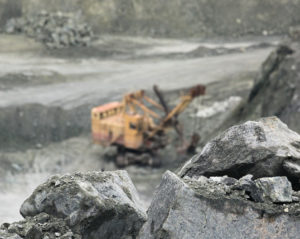A Texas-federal lawmaker recently introduced a bill in Congress allegedly targeting what has been incorrectly characterized as a “lack of transparency” when it comes to who, how, and why claimants receive compensation in asbestos bankruptcy trust funds. Other lawmakers have introduced similar legislation over the years aimed at making it more difficult for mesothelioma cancer victims to follow through with filing claims to receive the vital compensation necessary to pay for medical treatment and cover lost earnings.
House Judiciary Committee and House Committee on Oversight and Government Reform member Rep. Blake Farenthold submitted H.R. 906, known as the Furthering Asbestos Claim Transparency Act of 2017, along with cosponsors Reps. Bob Goodlatte, R-Va., and Tom Marino, R-Pa. Approximately 100 bankrupt asbestos companies have created trusts over the years to compensate mesothelioma cancer victims, many of which claim they are the targets of frivolous and exaggerated claims aimed at drawing more compensation than deserved.
The bill would require mesothelioma bankruptcy trusts to submit quarterly reports on claims submitted to the organizations, while (allegedly) protecting claimant privacy and personal information at the same time. While former President Barack Obama promised to veto any such legislation while he was in office, the new Trump administration is seen by many as more sympathetic to tort reform and particularly asbestos. According to his 1997 book, “The Art of the Comeback,” President Trump praised the use of the deadly material as a fire retardant, going as far to make claims that criminal elements pushed for legislation to ban asbestos so these entities could then corner the market in asbestos abatement.
 Asbestos & Mesothelioma Law Blog
Asbestos & Mesothelioma Law Blog



 Over 1,000 mesothelioma cancer victims recently settled claims against the state of Montana over allegations the plaintiffs developed the deadly asbestos-related cancer in a privately-owned asbestos mine. The settlement is the second such largest in the state’s recent history, after a $43 million resolution another group of 1,000 plaintiffs from Libby, Montana agreed to in 2011 as compensation for their own mesothelioma cancer lawsuit.
Over 1,000 mesothelioma cancer victims recently settled claims against the state of Montana over allegations the plaintiffs developed the deadly asbestos-related cancer in a privately-owned asbestos mine. The settlement is the second such largest in the state’s recent history, after a $43 million resolution another group of 1,000 plaintiffs from Libby, Montana agreed to in 2011 as compensation for their own mesothelioma cancer lawsuit. Scientists from the United Kingdom recently published a study outlining a potentially significant breakthrough in the fight against aggressive colon, lung, and breast cancers by identifying the genetic markers regulating cancer growth. In their report, the researchers demonstrated tumor growth may be decreased as much as 75% when scientists targeting one-specific gene and noted that 18 others either aid in tumor growth or can slow down the metastasization.
Scientists from the United Kingdom recently published a study outlining a potentially significant breakthrough in the fight against aggressive colon, lung, and breast cancers by identifying the genetic markers regulating cancer growth. In their report, the researchers demonstrated tumor growth may be decreased as much as 75% when scientists targeting one-specific gene and noted that 18 others either aid in tumor growth or can slow down the metastasization. Asbestos is a white, flaky mineral used for its heat resistant properties in various industries including construction, pipe fitting, shipbuilding, and as an insulation. While its physical properties and low cost make it ideal for use in many industrial applications, the mineral is extremely toxic and has a causal link to developing mesothelioma.
Asbestos is a white, flaky mineral used for its heat resistant properties in various industries including construction, pipe fitting, shipbuilding, and as an insulation. While its physical properties and low cost make it ideal for use in many industrial applications, the mineral is extremely toxic and has a causal link to developing mesothelioma. After a mesothelioma diagnosis, mesothelioma patients and their family members often have many questions about the contractions and treatment of the cancer. One of the most common questions is whether or not mesothelioma is a preventable disease or if there was something in the family history that caused it to develop.
After a mesothelioma diagnosis, mesothelioma patients and their family members often have many questions about the contractions and treatment of the cancer. One of the most common questions is whether or not mesothelioma is a preventable disease or if there was something in the family history that caused it to develop.